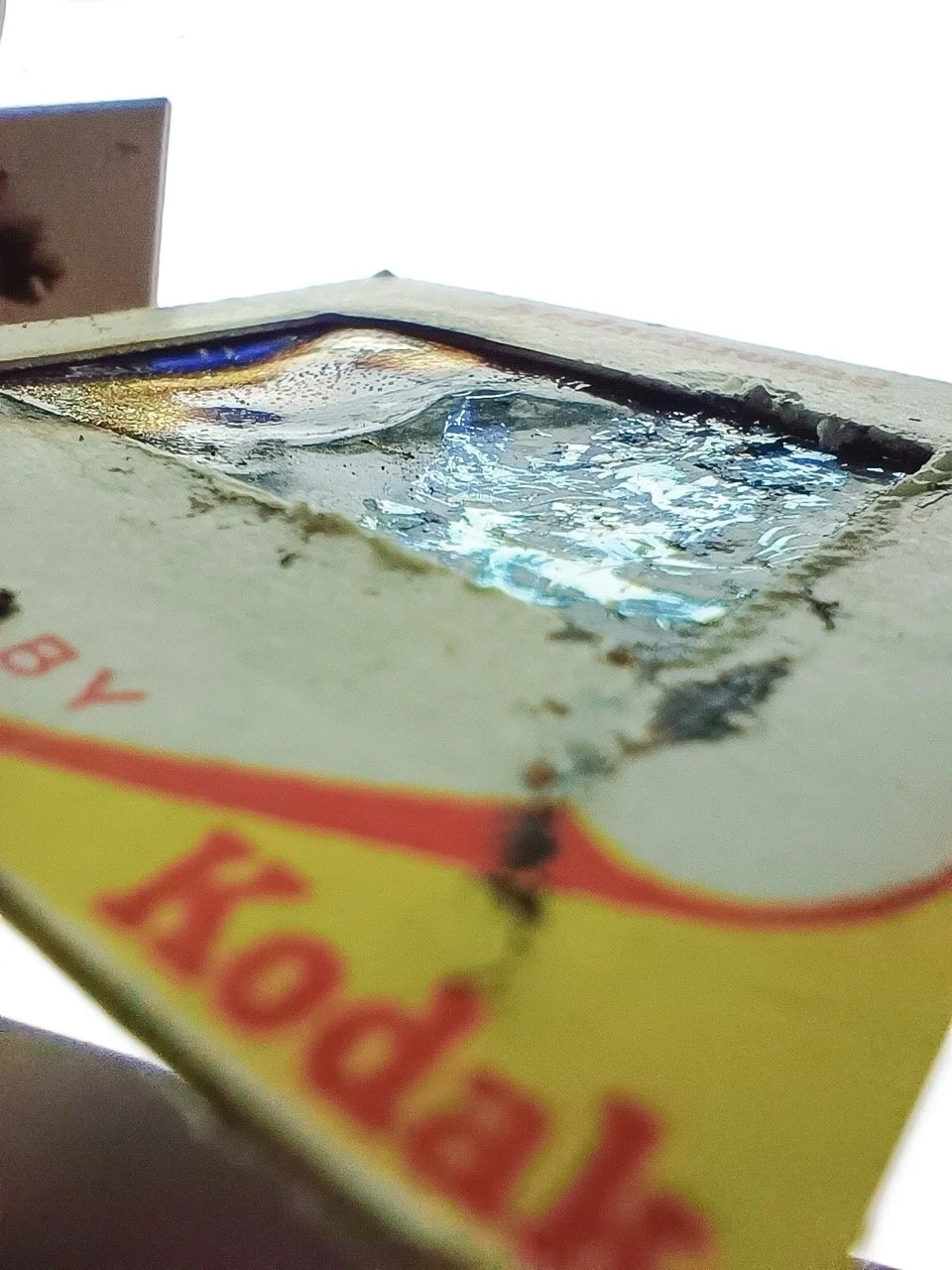Austin Settle's work exists in the tenuous space between permanence and destruction. Using color slide film as his catalyst, Settle sculpts photographic material through pioneering techniques of cutting, burning, painting, and meticulously exposing hidden emulsion layers—an original approach he has termed "substraaktion."
Each graphic manipulation is immediate and irreversible, comparable to Japanese calligraphy where a single stroke must capture the perfect and final form. The artist's canvases are fragments of forgotten lives—discarded family slides, vacation snapshots, and intimate moments—rescued from estate sales and rummage boxes, creating bridges between past histories and contemporary viewing.
Working with found footage allows Settle to breathe new life into these discarded histories, each layer of film a long-forgotten story given a new shape and hue. The process requires patience and meditation—each slide of film is carefully selected from groups of hundreds, not by chance but through a spark of connection that might take months or years to materialize and prompt the substraaktion process.
Upon first glance, viewers encounter vibrant colorscapes reminiscent of abstract landscapes; only later do they discover the original photographic content beneath. This simultaneous experience of broader composition and intimate details creates a tension between micro and macroscopic spheres of vision. From a distance, works appear as pure movement and light; up close, they reveal intricate narratives embedded in their surfaces.
At the intersection of photography and painting, Settle's work challenges traditional notions of filmic representation while celebrating the warm physical qualities of analog media in an increasingly digitally sanitized world. These pieces become personal Rorschach tests for viewers, reflecting their own histories and memories, and uncovering alternative narratives that bridge past, present, and implied future.
